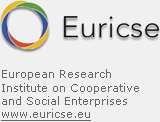 The study of negative ties (aversive or hostile relationships) and signed tie networks (containing positive, negative, and neutral ties) has a significant history in sociometric research. In spite of their relative rarity, negative ties are more likely to drive attitudes, behaviors, and consequences, including network change, as compared to more frequently observed positive ties and need to be increasingly incorporated into our work. This research area is ripe for both theoretical and methodological advancement. On a theoretical level, the topic remains largely dominated by one of its founding theories – structural balance theory – despite empirical evidence suggesting its limited utility. Methodologically, many of our existing measures and analytical techniques cannot be easily applied to negative and signed networks, thus leaving many important questions of general interest unanswered and unexplored. We invite researchers to advance the boundaries of generalizable knowledge about negative and signed ties in this special issue of Social Networks.
The study of negative ties (aversive or hostile relationships) and signed tie networks (containing positive, negative, and neutral ties) has a significant history in sociometric research. In spite of their relative rarity, negative ties are more likely to drive attitudes, behaviors, and consequences, including network change, as compared to more frequently observed positive ties and need to be increasingly incorporated into our work. This research area is ripe for both theoretical and methodological advancement. On a theoretical level, the topic remains largely dominated by one of its founding theories – structural balance theory – despite empirical evidence suggesting its limited utility. Methodologically, many of our existing measures and analytical techniques cannot be easily applied to negative and signed networks, thus leaving many important questions of general interest unanswered and unexplored. We invite researchers to advance the boundaries of generalizable knowledge about negative and signed ties in this special issue of Social Networks.
The substantial questions the editorial team believe remain unanswered and of significant interest to a wider audience include:
- What is a negative tie? How can we conceptualize different types or dimensions of negative ties and their antecedents? What is the relationship between positive, negative, and neutral ties? Are they on a unidimensional spectrum, orthogonal, or otherwise overlapped?
- How do endogenous and exogenous network mechanisms of signed ties interact to give rise to network change and group formation?
- How do signed ties interact with individual attributes?
- How do retaliation, envy and jealousy, reconciliation, social undermining, gossip, and cycles of violence relate to negative and signed tie networks?
- Which parameters (e.g. reciprocity, transitivity, homophily) are relevant to negative ties when using statistical modelling such as ERGMs and SAOMs?
- What are the theoretical alternatives to balance theory?
- What are the consequences of negative and signed ties? How do these consequences vary by tie type and social setting (e.g., online, classrooms, political legislatures)?
- Do negative ties help us when trying to detect subgroups and communities in networks?
- Do we need to use alternative measures of nodal position when dealing with negative and signed tie networks as compared to when using positive ties?
- Do different aspects play a role for perceptual accuracy when dealing with negative, rather than positive, ties? Are there differences in the consequences of perceptual accuracy?
The above list is only meant to be suggestive and not exhaustive -- we encourage authors to explore research on negative and signed ties that extends beyond this list.
We welcome and encourage papers using empirical data; we also welcome meta-analyses and modelling papers. Priority will be given to papers that advance generalizable knowledge of negative and signed tie social networks.
Review Process
Authors interested in expressing interest or asking questions prior to submission are encouraged to contact the editorial team at [email protected].
We will accept only the submission of full manuscripts. Submissions open 15 January, 2017 and will be evaluated on a rolling basis. Any submissions accepted will be published online immediately (even if accepted prior to the final submissions deadline).
The final submissions deadline is 15 January, 2018. We anticipate the special issue coming out in print in 2019.
The manuscript submission process is detailed at http://www.journals.elsevier.com/social-networks
Manuscripts should meet the submission criteria of the Social Networks journal and include an abstract (100 words or less). A manuscript length of approximately 20-30 pages of text is preferred (approximately 5,000-9,000 words, not including abstract, references, figures and tables; 12 point Times New Roman font, doubled-spaced, and one-inch margins).
All manuscripts will receive an initial screening from the editorial team, and only manuscripts deemed to have a reasonable chance of acceptance will enter the review process. After a maximum of two rounds of review, a rejection or acceptance suggestion will be made by the editorial team to the journal editors, who will make the final publication decision. A conference will follow to feature all of the accepted papers and to encourage continuing community building among scholars interested in negative ties and signed graphs.








